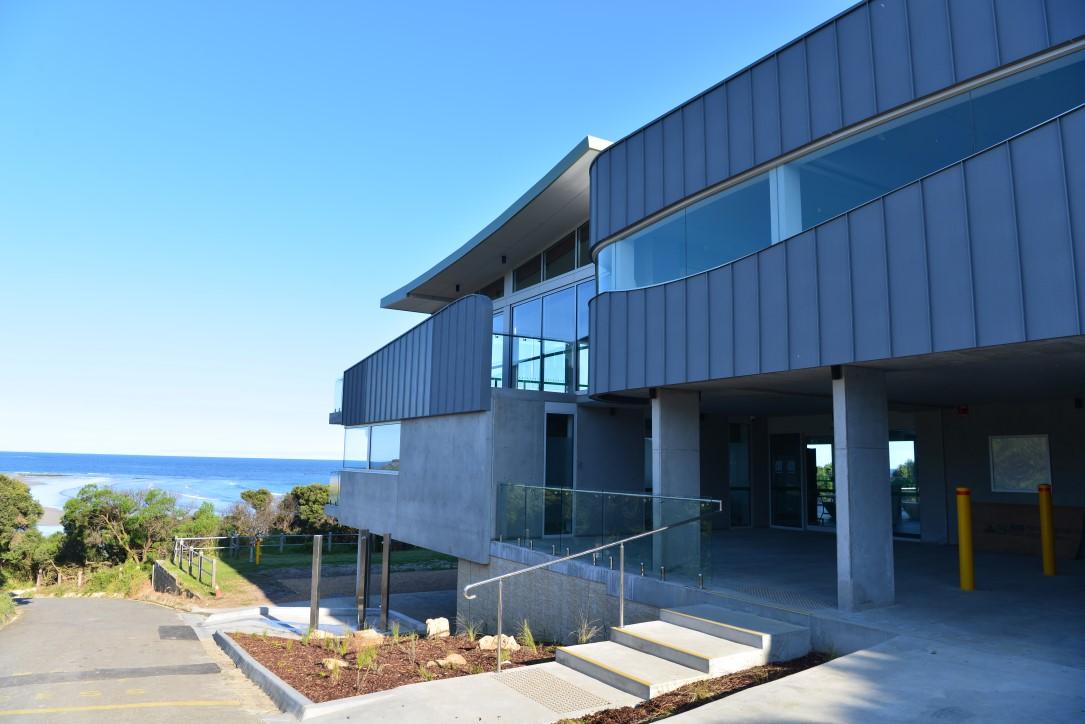
13 minute read
Book Reviews
Brought to you by Nicole and the team at Great Escape Books
Trust
Advertisement
by Chris Hammer
Trust by award-winning journalist and author Chris Hammer, is the third novel in the enthralling crime series featuring Martin Scarsden, but easily a read-alone as well. For once, life is just blissful for Martin Scarsden and Mandalay Blonde, until a terrified scream on the other end of the line sets into motion a thrilling quest for the truth. Where is she and why would anyone want to harm her? Thankfully, Mandalay is found, but many secrets from her past are unearthed in the process and when Martin’s best friend, a journalist, is found murdered on the eve of a highly secretive breaking story, the mystery deepens. Who is behind the murder and how is it connected to Mandalay’s past? A riveting roller-coaster examining the hierarchy of corporate power and police corruption by one of Australia’s best crime writers.
Review by Lydia @ Great Escape Books
The Happiest Man on Earth
by Eddie Jaku
At 100 years of age, Eddie has been through more than most can comprehend. From a young boy, needing to assume a secret identity and being sent away from his family to study, and as a young man to face the unimaginable horrors of the concentration camps; losing his identity, his family and his country and fighting to survive every day of his life. It is in the darkest times of his life that Eddie made the decision to be thankful for everyday he was alive, and to make a commitment to smile every day. Even if the day was an unhappy one. A complete treasure of a book, that is the perfect read to put life in perspective.
Review by Lydia @ Great Escape Books
Letters from Berlin
by Tanya Blanchard
An epic tale of strength, bravery, and the healing power of love, amidst some of the most incredibly devastating events in history. For 18-year-old Susanna Gottmann, life in Berlin in 1943 is a precarious battle of survival as the allied forces encroach.
Presented with an opportunity to help her family by accepting the help of a man of influence ... a senior Nazi official, Susanna forgoes any sense of a happy future with her beloved Leo and pays a great personal cost few can imagine. An incredible World War II novel based on a true story.
Review by Lydia @ Great Escape Books
The Cat and The City
by Nick Bradley
This quirky little novel will appeal to all lovers of Japan and Japanese based literature. It begins with a tattooist in Tokyo who receives a most unusual commission from a young woman. The design she desires is intriguing – a recreation of the city that will cover her entire back.
Despite her insistence on the city being uninhabited, the tattooist adds a small cat outside famous Shibuya station. However, when she returns for future sessions, to his astonishment he sees that the cat is wandering around the inked cityscape. Bradley takes us on a tour of Tokyo's heart and the lives of its people though this little calico cat, a uniquely beautiful little novel, perfect for our times.
Review by Nicole @ Great Escape Books

HISTORY SPOT ‘Reel’ Stories from our Surf Life Saving Clubs EARLY HISTORY OF ANGLESEA SURF LIFE SAVING CLUB
By Jan Morris, Anglesea & District Historical Society
Anglesea should be rightly proud of its Surf Club. It provides an excellent service to the community and now has a ‘state-of-the-art’ building, but it wasn’t always like that.
On 25 March, 1875, T he Geelong Advertiser reported a near drowning at Anglesea, and again in December a similar near drowning. A youth was swept off the rocks while fishing. A friend stripped and jumped into the water. The only equipment he had was a pole used for cray fishing. On Christmas Day, a similar accident occurred. There was no equipment on the beach and no one was trained in any method of life saving. Over the years there were several drownings and many near misses. This situation continued until 1920.
Following yet another drowning at Anglesea on Monday 27 December 1920, members of the Brighton Beach Life Saving Club visited Anglesea and gave a display of life-saving methods in the river and in the ocean. This prompted Mr Lloyd Brind, of Ballarat, to present a surf reel for Anglesea beach. It was housed in a shed in the middle beach area.
During the 1920s and 30s the river was the preferred swimming spot for many people. The shire was requested to supply a similar life reel for the river. However, the request was refused. The McMillan family helped the situation by providing a life ring from the Inverlochy that had been wrecked at Anglesea in 1902. Each summer the McMillan’s hung it on the outside wall of the change rooms on the river bank.

In November 1951, June Baker executed a dramatic surf ski rescue of three people in rough seas. June was a young teacher who had fortunately brought her ski along for the day and was able to use it to rescue the people in trouble. This stirred local residents to realise the need for a Surf Life Saving Club. A public meeting, called on 20 January 1952, formed the Anglesea Surf LifeSaving Club (SLSC) with June's father, David Baker, as the first president. They built a club shed in front of the dunes. It was soon washed away. A second shed was built half way up the dunes. This was abandoned during WW2.
In 1952, the S.L.S.C. was re-formed. The pre-war shed was found buried in sand to within three feet of its roof, and dug out. This was replaced by a threeroomed Clubhouse opened in 1962. In 1968, a 73-berth clubhouse with kitchen and boatshed was erected. Other extensions were added over the years, including the Alcoa lookout tower and restaurant.
Shed built in sand dunes

With better facilities year by year, Anglesea Surf Club grew in both membership and activities. Their skills and equipment continually improved and they started training a young age group, with the introduction of Nippers.
Now with the completion of the new $5,000,000+ clubhouse, excellent training and modern equipment, Anglesea S.L.S.C. is recognised as not only a premier club in Australia, but also worldwide.
Let us show our appreciation for the service they provide to our community and visitors by supporting their annual door knock appeal.

By Keith West, Historian, Fairhaven Surf Life Saving Club
Who could have predicted that a beach tragedy in 1937 was to become closely linked to the formation and growth of a successful community organisation in future years?
Fairhaven Surf Life Saving Club is an integral part of the network of similar community clubs along the Victorian Surf Coast. It was officially formed in 1957, following a lengthy period of community meetings and local consultation, and joined the Australiawide surf life saving movement. The club began beach patrol operations at Fairhaven, and has proudly contributed to the community for more than 60 years. However, there is more to the Fairhaven story. While 1957 is recognised as the year that Fairhaven SLSC started, it is of historical interest to relate an incident that occurred 20 years earlier. In 1937, a tragic event happened at Fairhaven beach that will always remain a significant part of the club’s history. Fairhaven, at that time, was a beautiful, rugged, sparsely populated place on the south-west Victorian coastline.
Amy Patterson was a young school teacher at Korowa Church of England Girl’s Grammar School. In the summer of 1937, Amy and some friends rented accommodation at Fairhaven for a holiday weekend. Coastal weather was poor and the sea very rough. However, Amy, who was a fit and competent swimmer, decided to try the surf. In a short time she began to struggle and could not cope with the big seas and strong currents. Amy was swept out beyond the breaking waves and was unable to return to the beach.
The alarm was raised and rescue efforts were mounted. Attempts to save the young teacher from the heavy surf were long and arduous with Mr Marwick and Mr Cowan, from the nearby boarding house ‘Fairhaven’, being involved. A clothes line and some strong, courageous swimming by Mr Marwick eventually enabled an exhausted and distressed Amy to be brought to shore. Tragically, the ordeal was too great, and despite all efforts, Amy Patterson died on the Fairhaven beach.
Following Amy’s tragic death, her devastated family and friends purchased a life saving reel and line from the West St Kilda Life Saving Club and placed it in a small shed in the The first life savers of Fairhaven. The reel in the shed can be seen in the dunes behind (1957). dunes at Fairhaven in memory of their Local meetings were held and the loved one. decision to form the Fairhaven Surf The reel and line has been recognised as a traditional and iconic item of surf Life Saving Club was eventually made in 1957. rescue equipment since the early 1900s. Young men who had restored the reel The reel was regarded by Amy Patterson’s family as a fitting tribute and a potential lifesaving aid for beach users in future years. A small iron shed in the shed began training and gained their Bronze Medallion. David Carr became the first Club Captain joining Michael Devonport, Norman Luff, in the Fairhaven dunes hosted the life Chris Holland, Russell Hughes and saving reel and line for many years, Euan Pollock as the first active including the passage of the Second patrolling members at Fairhaven beach, World War and its aftermath. early in 1958. Time, weather and the harsh beach From those early beginnings Fairhaven environment took their toll over the club experienced continual growth and years and the reel fell into a state of development. Through the ensuing disrepair. By the mid 1950s, Fairhaven years, beach life saving services, a and Aireys Inlet, were small, quiet widely acclaimed nipper program, coastal communities on the Great training of many young lifesavers and a Ocean Road that were growing in strong social focus continue to be population and as holiday destinations. among the many features of a popular There was significant local interest in organisation. the formation of a life saving club. and successful volunteer community Some beach-loving young men, led by The reel in the shed, affectionately local David Carr, also became known as “The Amy Patterson”, was interested in surf life saving and used by early patrols at Fairhaven and starting a club. They restored the is now, fully restored and proudly dilapidated reel in the shed and returned displayed in the clubhouse. the family tribute to full working order. The story of the early tragedy and reel The life saving ambitions of the in the shed should be remembered as an Fairhaven - Aireys Inlet community important prelude to the history of the continued to develop. Fairhaven Surf Life Saving Club.




Tech AngleTWITCHERS’ CORNER By Chris Dos Written and illustrated by Kaye Traynor
Sacred Kingfisher
Todiramphus sancta
Three kingfisher species are present in this region. Laughing Kookaburra, and two smaller species, the Azure and Sacred. Members of the family are easily recognisable. Their bodies are plump, heads large, with long, heavy straight bills; legs very short and feet small. Posture is upright as they sit motionless on a vantage point ready to plunge to the ground or water to take their prey. Flight is swift, direct and usually low for a short distance. The Sacred Kingfisher is widespread and common. It is a land kingfisher and inhabits a wide range of wooded and open forest country, rivers, lakes, seashores, mangroves and golf courses. It is found throughout Australia, in suitable habitat, but absent in most arid regions. Also occurs in New Zealand.

An attractive bird. Upperparts turquoise; bright turquoiseblue on lower back and rump, deeper blue on shoulder and tail. Underparts and collar whitish, variable, in winter plumage becoming buff on the breast, this fading almost to white by late summer. There is a broad, black band from the base of the bill through eye to nape of neck, and a pale-buff to cinnamonbuff spot in front of each eye. Female: Larger, duller and greener above, with collar and underparts whiter. Immature: duller with buff feather-margins. Diet consists mainly of small lizards, crickets, grasshoppers, beetles and their larvae. When close to water, they will take fish and both freshwater and saltwater crustaceans, The Sacred Kingfisher spends much of its time perched on a small, fairly low, bare branch; it sits very still, occasionally bobbing its head as it watches for prey. Breeding season occurs from September to March. The nest site is usually a small hollow in a tree trunk or limb. In some cases drilled into a termite nest in a tree or an earth bank. Both sexes excavate the nesting burrow, both incubate the eggs, rear the young and defend the nest. Three to five glossy white eggs are laid. (Ref: The Great Australian Birdfinder - Michael Morcombe)
By Chris Dos
Let’s look back at the developments in technology that have enhanced and occasionally infuriated us in the past 12 months.
In a year that has at times felt like falling down the stairs in slow motion, nothing seemed more abrupt than the drastic changes brought to our lives by the pandemic.
With our human-ness severely restricted, we found apps and resources to enable us to maintain our connection with family and friends and to get our work done while still wearing pyjamas. We also found a renewed appreciation for that indefinable something we get from sharing the company of others.
There’s been the usual array of warnings regarding emerging technology. TikTok was just about banned in the US as foreign government spyware, but the idea ran out of steam and didn’t eventuate. 5G towers were burned due to their perceived health risks (and other towers, can’t be too careful). One theory even linked 5G to the spread of COVID-19.
Traditional media continued its decline as an influencer of public opinion. A recent survey in the US reported 60 percent of respondents had ‘not very much trust’ to ‘no trust at all’ in newspapers, television and radio. People are more often tuning in to news sources with which we already agree.
Group public shaming on social media or ‘cancel culture’ has claimed many scalps, some for the betterment of humanity and some not.
Watching a documentary called “The Social Dilemma” provided an epiphany of sorts.
It followed an ex-employee of Google who developed serious reservations about the way its technology was intruding in people’s lives.
I’ve expressed concern before about the amount of personal information we give up in order to use these ‘free’ platforms, but there are also more manipulative processes aimed at keeping you engaged for the benefit of their sponsors.
Describing the relationship between the social media provider, advertiser and user, they summed it up well: If you’re not paying for the product – you ARE the product.










